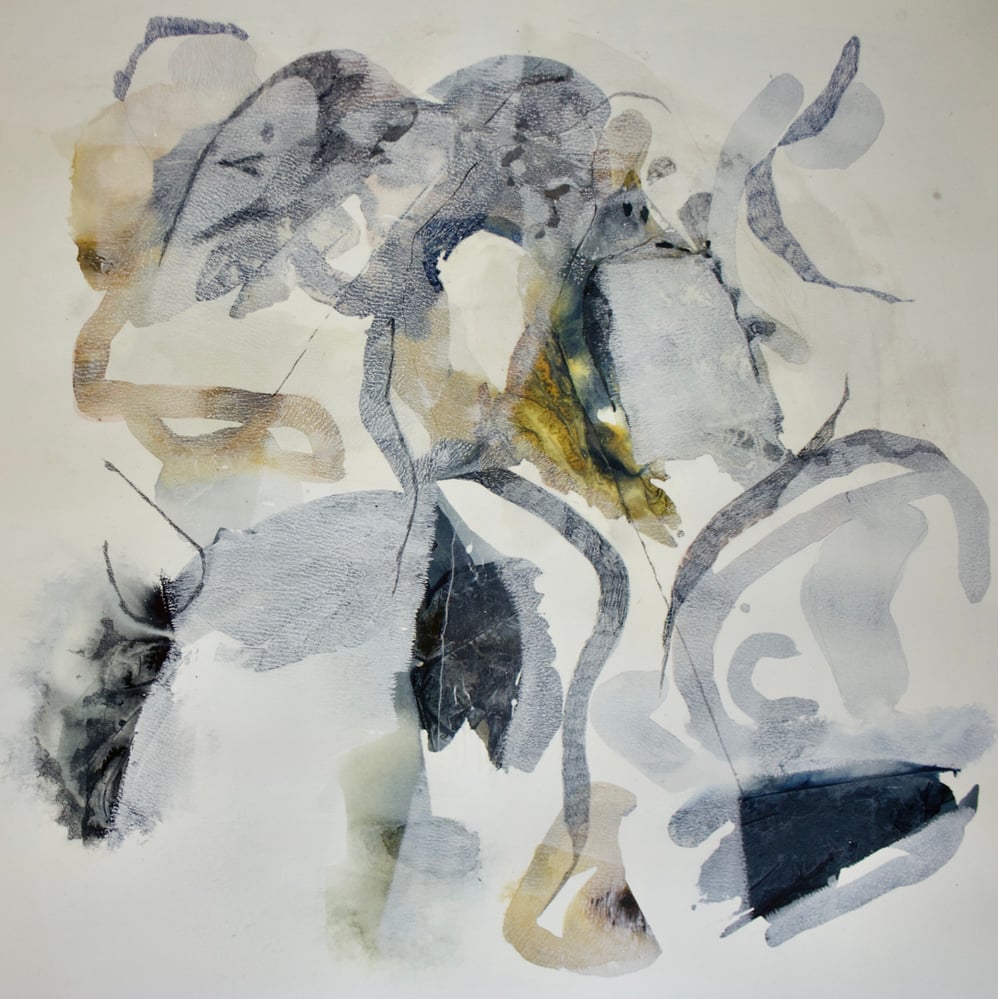
Craving a consolidated community and a shift in perspective, artist Erin Palovick left Atlanta in 2021 to pursue an MFA in Studio Art at the University of Illinois at Chicago’s School of Art and Art History. She returned to Atlanta in 2023 as Erin Hamm.
Hamm’s new studio is in the lower level of a 1920’s farmhouse in East Atlanta. With gardens, walking trails, and three additional studios on the 2.6-acre Flat Shoals Farm, a small artist community thrives in the woods. Inside the farmhouse, after moving through a few small dim, low-ceilinged antechambers, her studio opens up brightly with works on paper and clay sculptures, bags of powders, and shelves of inks. Deep window ledges house plants and books. Over tea and pastries, we talk about identity’s relationship to practice, choreography as collage, and how to actually listen. The following conversation was edited for length and publication.
JENNIFER DUDLEY: You haven’t created an alter-ego or adopted a nom de plume and yet, by means of a social convention, you’ve been given this opportunity to use a new name—or a second name.
ERIN HAMM: Yeah, I had always thought about playing with two names because my practice followed two separate paths. Like one path is material focused and the other kind of like in-between-material focused. When I got married, I suddenly had this other name available. At first, I couldn’t decide which to use for which practice. But I realized that both practices are speaking to each other and I’m learning from the two of them, they are interconnected. Not having a clear “this is labeling this” and “this is labeling that,” I can appreciate the slippery nature of having those two practices and those two identities.
There was only one other occasion when I went by a different name. It was a collective, so it wasn’t just me, but we called ourselves Queersar and called ourselves by our names within that structure.

JD: I wanted to know more about your relationship to dance and choreography.
EH: I’ll start by saying my relationship to it as a medium is untrained. And curious. And I admire dancers and choreographers, the way that they communicate their ideas. Not only through dance, but through their language around dance. It’s a type of intelligence that is formed through something that is “here” and then “not here” very quickly. Things live and die in the same breath. I can connect it back to sound and listening.
To wrap that back into this dance with the material. I think it’s helped me make sense of my works on paper. I am thinking about those works in the same language that I’m thinking about collaboration. What I’m learning through collaboration is that it’s never ending. There’s not really like a start or a finish. I think I’m trying to pull that into my paintings. There aren’t super-defined edges, which is something I’m also trying to pull in visually. It’s like play with boundaries. Dance makes me think about a collage of experience—multiple happenings going on at the same time—which also happens on paper for me. It’s not perfect, which can give me a lot of heartache.
JD: Some of the systems that you have been engaging in your work come from the composer Pauline Oliveros, who conceptualized deep listening. You’ve also been able to study with Salomé Voegelin who’s written about the ethics of listening and was a visiting critic when you were at UIC. How did you originally become engaged to these concepts of sonic awareness and deep listening?

EH: I think this was another part of my grad school journey that really surprised me. I had been thinking about listening, maybe silence specifically, and what happens in silence, and I took this course with Deborah Stratman called Radical Listening. And the name alone just felt like everything to me. It was through her course that I discovered both Pauline Oliveros and Salomé Voegelin.
The process of truly listening, to step back—it’s different than hearing. Listening is more of an awareness. Hearing is something that we just kind of do automatically. It’s not something that we can turn off. On a primal level it’s like an alert system for us. But often what it is that we hear, we don’t really make sense of it until we look at the thing. Deep listening is a practice of trying not to make predictions, to try and not define or dissect what I’m hearing. To just, for a moment, close your eyes and tune into the soundscape.
JD: Your interest in deep listening correlates to your use of abstraction in your works on paper, where there is the temporality of collage, and a fluidity, a liquidity of marks, and the non-rigid boundaries of the rectangle. Do you find that relationship in your works on paper?
EH: Yeah, thank you for making that connection. Really tapping into my process. There’s such a parallel to this practice of deep listening for me. It’s more action-oriented of course. I think it’s tricky for me to talk about these abstract works as finished. It feels like some kind of dance between me and the material and the surface. But then there’s kind of like the privilege of this mark that’s left. It reminds me then of working with clay, something that also holds memory and action.





